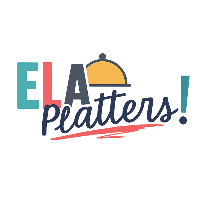Reading response journals are an excellent educational tool that promotes active learning, critical thinking, and personal engagement with texts. By encouraging students to interact with what they read, these journals help to deepen understanding and enhance literacy skills. Let’s explore how students benefit from incorporating reading response journals into their academic routines.
What is a Reading Response Journal?
A reading response journal is a personal space where students write about what they are reading. They can summarize, question, analyze, and reflect on texts, whether fiction or nonfiction. Unlike formal essays, these journals are more flexible and allow students to express their thoughts freely without worrying about rigid structures or grading pressure.
Key Benefits for Students
1. Enhanced Comprehension Skills
When students summarize or reflect on what they read, they must process and rephrase the material. This action strengthens their understanding and helps solidify key concepts, themes, and vocabulary.
2. Development of Critical Thinking
Reading response journals encourage students to go beyond surface-level reading. They learn to make inferences, identify patterns, compare texts, and question the author’s intent, which sharpens their analytical skills.
3. Improved Writing Fluency
The informal nature of reading response journals helps students practice writing consistently. Over time, their ability to articulate thoughts clearly and coherently improves, benefiting all areas of their academic work.
4. Increased Personal Connection to Reading
When students are allowed to relate texts to their own lives, feelings, or opinions, they develop a stronger, more personal connection to literature. This emotional engagement often leads to a greater love for reading.
5. Better Classroom Discussions
Students who maintain reading response journals often come to class prepared to contribute thoughtful insights. This preparation leads to richer, more meaningful classroom discussions and collaborations.
6. Encouragement of Self-Reflection
Beyond the text, journals encourage students to reflect on their learning process, reading habits, and growth as readers and writers. This metacognitive skill is crucial for lifelong learning.
How Teachers Can Support Reading Response Journals
-
Provide Prompts: Offering guiding questions or prompts can help students who may not know how to start.
-
Model Responses: Teachers can share sample entries to show various ways to engage with texts.
-
Allow Freedom: Encouraging creativity in journal formats—such as drawings, poems, or letters to characters—can make the process more enjoyable.
-
Offer Feedback: Light, constructive feedback can motivate students and show that their thoughts are valued.
Examples of Effective Reading Response Prompts
-
What was the most surprising part of the story? Why?
-
How would you change the ending of the book?
-
What connections can you make between this book and your own life?
-
What questions do you have after reading today?
-
Describe a character you admire or dislike and explain why.
Conclusion
Reading response journals are a simple yet powerful strategy to foster better readers and writers. They create an active dialogue between the student and the text, making reading a more thoughtful, personal, and enriching experience. Schools and educators who implement this practice consistently will likely see noticeable improvements in student literacy, engagement, and critical thinking skills.

